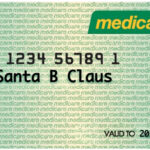Backdated bills are off the table, but it will be difficult for Queensland GPs to claim they are not employees.
The good news is that GPs in the sunshine state won’t be hit with a retrospective tax bill. The bad news is everything else.
As promised in December, the Queensland Revenue Office has released a public ruling detailing how it will interpret and apply relevant contractor provisions in relation to payroll tax in the wake of the Thomas and Naaz decision.
The QRO also confirmed, in writing, that payroll tax audits on medical practices in relation to contractor provisions will be limited to July 2021 onwards.
In other words, practices that were worried about receiving a jumbo tax bill going back five years can now breathe out.
QRO acting commissioner Amy Rosanowski said this type of arrangement was not commonplace, but she had made the decision to grant an audit limit in view of “potential lack of awareness” of payroll tax law among GPs.
Further details on the audit limit, including the fate of practices which have already been audited, will be ironed out over the coming weeks.
Although the AMA Queensland trumpeted the confirmation of a grace period as a win, other news out of the state is grim.
The QRO’s public ruling effectively leaves very little room for practitioners to argue that they are not practice employees.
“If a medical centre engages a practitioner to practice from its medical centre, or holds out to the public that it provides patients with access to medical services of a practitioner, it is likely the relevant contract provisions will apply,” the ruling said. A “relevant contract” is one to which normal payroll tax rules apply.
RACGP vice president Dr Bruce Willett, who has been liaising with the QRO, told The Medical Republic the ruling was “concerning”.
“My advice to members is, essentially, unless we can negotiate our way out of this really strict interpretation … practices will need to pass on the increased cost [of payroll tax] to patients,” he said.
“It’s just not in the system to be able to continuously absorb that [cost].”
The tax takes roughly 5% of gross billings, which Dr Willett said will be enough to wipe out the profitability of some practices.
The Queensland-based doctor encouraged GPs to start discussions with their patient about the need for costs to be passed on, and to let them know that they can thank the state government for their increasing bill.
“The political pressure needs to come on now,” he said.
It’s still unclear what the implications of the Queensland ruling will be for other states.
The state tax offices of NSW, Victoria and South Australia did not respond to TMR’s request for comment before deadline.
The ruling casts a wide net in terms of who can be considered an employee.
“Under a relevant contract between a medical centre and a practitioner, the practitioner, being the person who performs the work required under the contract, is taken to be the employee,” it read.
“If the relevant contract is between a medical centre and a practitioner’s entity, and the practitioner’s entity engages the practitioner to provide services under a separate contract with practitioner, the practitioner is taken to be an employee under section 13D.”
There are three main exemptions that practitioners can use to argue that they are not employees of a medical centre.
One of these involves services being performed by more than one person – this is quite technical and appears most likely to apply in dentistry settings – and the second exemption only applies when a practitioner has worked for the practice for 90 days or fewer in one financial year.
The exemption which appears to be most relevant for a general practice setting is section 13B(2)(b)(iv), where the practitioner can demonstrate that they are providing services to the public generally and are therefore a true contractor.
In order to qualify, however, “the practitioner must provide services of the same kind to other medical centres or hospitals”.
The secondary medical centre or hospital can’t be part of the same group – say, for instance, another centre owned by the same corporate.
All payments to the practitioner made by the medical centre are wages in the eyes of the tax office, and the onus is on the practitioner to prove otherwise.
Healthcare accountant David Dahm said the ruling was just a guideline as to how the law will be interpreted, and that it doesn’t necessarily lay down the law.
“It’s all in the art of how you’re presenting the practitioner to the public and whether the public sees it as coming and visiting the practice or the practitioner,” he told TMR.
“That’s really the key element in all of this, and the contracts and all your systems should mirror that arrangement.
“I know the first kneejerk reaction is to go ‘Oh my God, this is the end of days’, but it’s not [necessarily] like that.”
Areas that can be easy to address, Mr Dahm said, include making sure practitioners have their own website (this is to satisy the federal ATO, which says doctors must make a “public offer” of their services or be seen as employees) and stationery that lists their own ABN, rather than that of the practice.
“You need to speak to your accountant or your advisors, and make sure that the correct entities have the correct ABN entered into the primary accounts,” he said.
“Basically, you need to ensure that your business is doing what you’re saying your business is doing and what you think your business is doing – it also needs to exist in paper and in legal documentation.”





